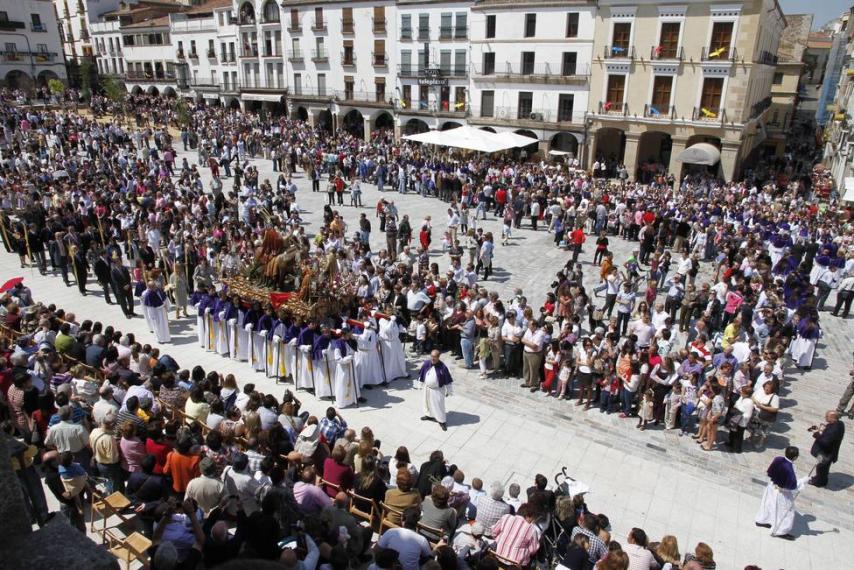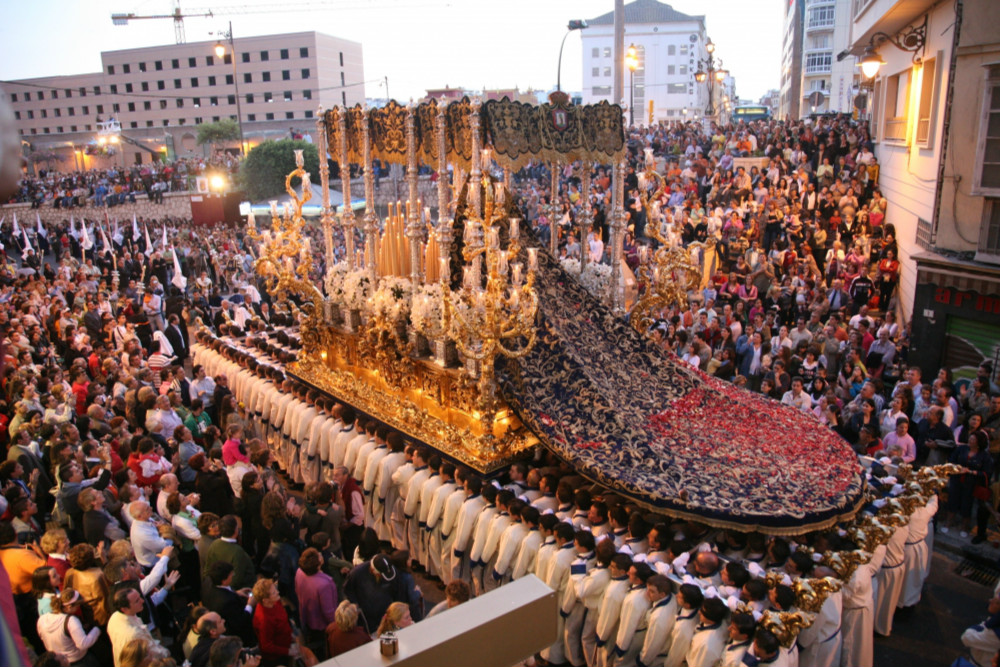These are the first mini-holidays of the year when most of us try to get away for a few days and Holy Week is perfect for a short break someplace here in Spain to welcome in the spring.
Destinations with a long religious tradition are always a big hit around Easter, so forget about the sun and beach and check out some of the best places to visit in Spain during Holy Week.
Malaga:
Malaga is one of the cities where religious events are celebrated most and on February 16th, 1980, Holy Week in Malaga was declared an International Tourist Interest of Spain.
It has some special quirks that make it special to the others celebrated in the rest of Spain. One of the biggest differences are the thrones, enormous platforms to carry the sculptures of the Virgin and Christ that need between 120 and 270 bearers to carry them on their shoulders.
The so-called ‘pulsos’ are also distinctive, and visitors will notice that when the Throne Butler rings the bell three times, the bearers lift the throne above their heads in perfect sync.
Traditionally it is Brotherhood of Borriquita that opens the processions in Spain, but in Malaga, it’s the Brotherhood of Pollinica who begins the proceedings on Palm Sunday morning. Holy Week in Malaga, is very different to that celebrated in other parts of Spain, and those who visit for the first time will be surprised, as the Passion Week there is not lived with contemplation and silence, but is full of happiness, noise, cheer, spontaneous saetas (flamenco verses sung at the processions) and applause as the sculptures pass through the streets.
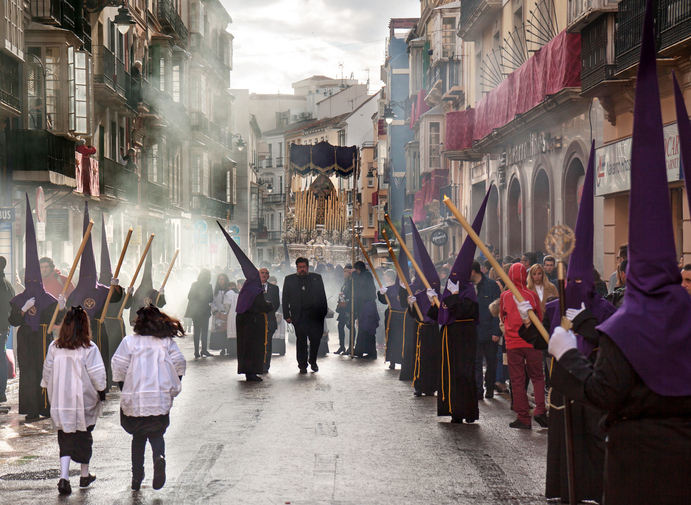
Seville:
Along with Malaga, Seville is another great city to truly experience the Spanish Holy Week. The Andalusian capital practically comes to a standstill; locals take out their best clothes, and the city is ready to receive the invasion of visitors to the city. Holy Week in Seville doesn’t have a schedule, night and day are mixed with the rhythm of the pasos (floats) and costaleros (bearers).
The smell of incense, the heat, and the hustle and bustle create a unique atmosphere that’s difficult to escape.
The most popular sculpture of the Virgin is La Macarena, which has 65 costaleros in total, and typically draws huge crowds. The big moment of the week is ‘The Easly Hours of Good Friday’ that starts at six the previous evening and finishes the next morning at 7am. This is a unique event and a particular highlight of note in Seville during Holy Week.
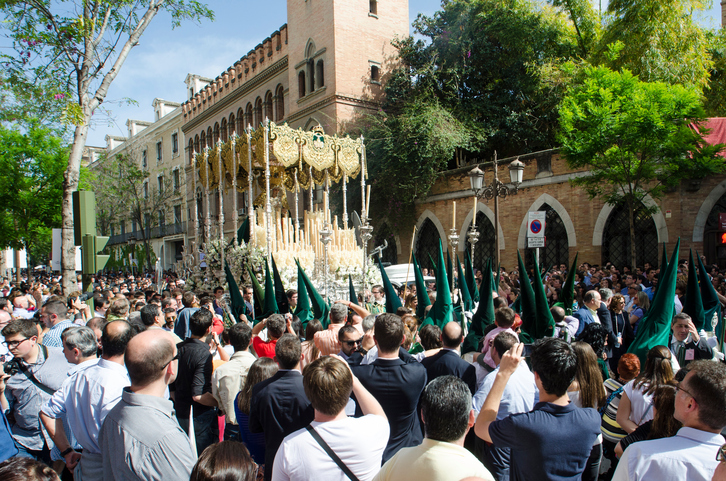
Toledo:
Catalogued as an International Tourist Interest of Spain, Holy Week in Toledo is different to those celebrated in the south as it’s more a week of contemplation and religious expression. The death and passion of Christ processions draw the biggest crowds in the medieval city of Toledo where the role of the brotherhoods in carrying the statues through the narrow winding streets in the old town is highly respected.
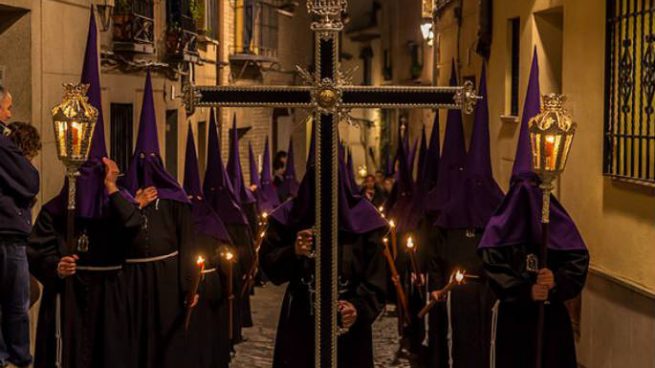
Cáceres:
Holy Week in Cáceres mainly takes place in the city’s historic centre and is now declared World Heritage by UNESCO. Medieval in origin, one of the highlights of the week is on Holy Wednesday night when the statue of the Black Christ is carried through the city streets in absolute silence.
